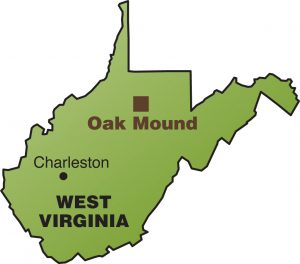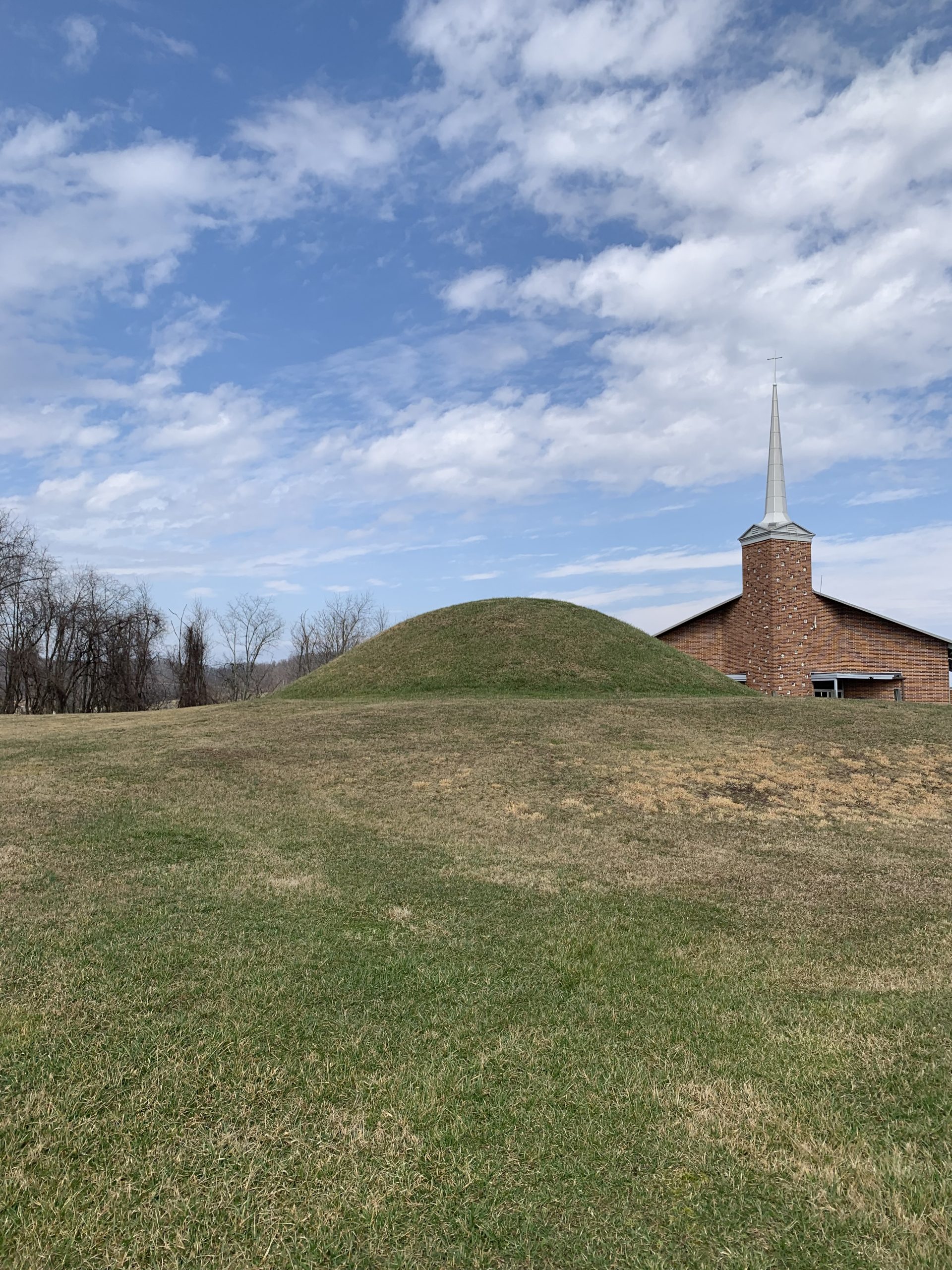 On a high bluff overlooking the bank of the West Fork River in West Virginia rises the remains of Oak Mound. This large Native American mound once measured 10 to 12 feet in height and was nearly 60 feet in diameter. Even today, with the size of the mound reduced due to erosion and previous excavations, it stands out as an impressive feature on the horizon.
On a high bluff overlooking the bank of the West Fork River in West Virginia rises the remains of Oak Mound. This large Native American mound once measured 10 to 12 feet in height and was nearly 60 feet in diameter. Even today, with the size of the mound reduced due to erosion and previous excavations, it stands out as an impressive feature on the horizon.
While the earliest written documentation of the mound dates back to the early 1900s, no detailed descriptions or investigations were made until the 1960s. Much of what we know about the site comes from excavations in 1969 conducted by history professor Ron Gilmore and students from North Carolina’s Salem College with help from the Archeology Section of the West Virginia Geological and Economic Survey. It is thought that the mound could have been one of two that formed a larger complex. Unfortunately, the second mound, which was smaller, was never tested to confirm whether it was natural or constructed by humans prior to it being destroyed. The larger mound became the focus of excavation as it also was slated to be destroyed in order to expand a parking lot.
Findings from the 1969 excavation revealed that the mound contained three burial features containing at least five individuals and associated artifacts. After the excavation was completed, the soil that was removed was once-again piled up in order to “rebuild” the mound as it had originally stood, albeit smaller in scale. Reports from this work were never published, and current archaeologists have had to rely on sparse excavation notes. A summary written by archaeologist W. Hunter Lesser in 1983 provides the most detailed information about the research, and the site and artifact collection is currently being reexamined at the West Virginia Archaeological Research and Collections Management Facility in order to publish a more detailed report and update the NAGPRA inventory in order to allow for future repatriation.
Radiocarbon dates from materials found during the excavation suggest that the mound may have been constructed around 100 B.C., during the Early Woodland Period. It may be associated with the Adena Culture, which flourished in the Ohio Valley and surrounding region in the United States from approximately 1000 B.C. to A.D. 1. The Adena culture is known for construction of impressive earthworks and burial mounds, such as Grave Creek Mound in Moundsville, West Virginia.
The owners of the property, the Goff family, who have long been stewards of the site, wanted to ensure that it would remain protected in perpetuity given its sacred nature to Native American communities. They agreed to work with The Archaeological Conservancy, and donated the land so that it would remain protected. Conservancy staff are incredibly grateful to Olivia A. Jones, lead curator at the Grave Creek Mound Archaeological Complex, and West Virginia University anthropology student Bethanny Prascik, who have been working with the family who owned the site and the Conservancy to ensure its preservation. “West Virginia has a rich history of prehistoric occupation, but there is little systematic archaeological research being conducted in the state,” Prascik said. “I am very proud that our research has helped lead to the protection of Oak Mound.”
The site is located just south of Clarksburg, next to Oak Mound Evangelical Church, whose representatives have assisted with maintenance and stewardship of the mound for years. The Conservancy plans to continue working with this community and Native American tribal nations for continued site maintenance, and hopes to install interpretive signage at this highly visible site in order to educate the public about its importance.




